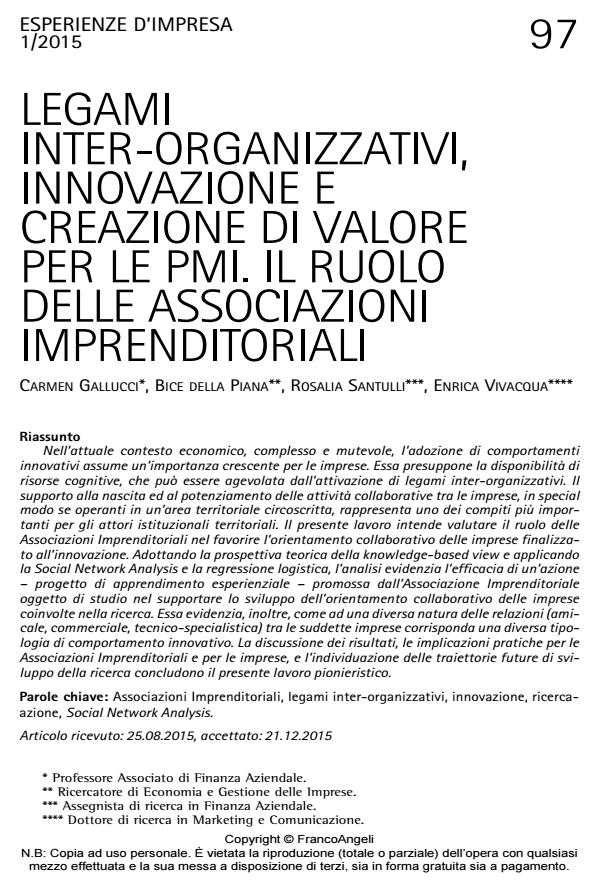Legami inter-organizzativi, innovazione e creazione di valore per le PMI. Il ruolo delle associazioni imprenditoriali
Journal title ESPERIENZE D'IMPRESA
Author/s Carmen Gallucci, Piana Bice Della, Rosalia Santulli, Enrica Vivacqua
Publishing Year 2016 Issue 2015/1
Language Italian Pages 17 P. 97-113 File size 220 KB
DOI 10.3280/EI2015-001005
DOI is like a bar code for intellectual property: to have more infomation
click here
Below, you can see the article first page
If you want to buy this article in PDF format, you can do it, following the instructions to buy download credits

FrancoAngeli is member of Publishers International Linking Association, Inc (PILA), a not-for-profit association which run the CrossRef service enabling links to and from online scholarly content.
In the current complex and changeable economic context, adopting an innovative behavior is becoming important for the firms. Innovation needs for cognitive resources, which the firms can ottain due to relationships and inter-organizational links. Business Association should support the born of relationships among associated firms. This paper, drawing on knowledge-based view, aims to evaluate the role of Business Association to encourage cooperative behaviors necessary to innovate. By applying the Social Network Analysis and the logistic regression, the main findings highlight that Business Association can help the firms to collaborate among them. Besides, they suggest that to different type (friendly, commercial, information exchange) of inter-organizational links correspond different innovative behaviors. Implication for practice, limitation and future developments are also discussed.
Keywords: Business Association, inter-organizational relationships, innovation, action research, social network analysis
Carmen Gallucci, Piana Bice Della, Rosalia Santulli, Enrica Vivacqua, Legami inter-organizzativi, innovazione e creazione di valore per le PMI. Il ruolo delle associazioni imprenditoriali in "ESPERIENZE D'IMPRESA" 1/2015, pp 97-113, DOI: 10.3280/EI2015-001005